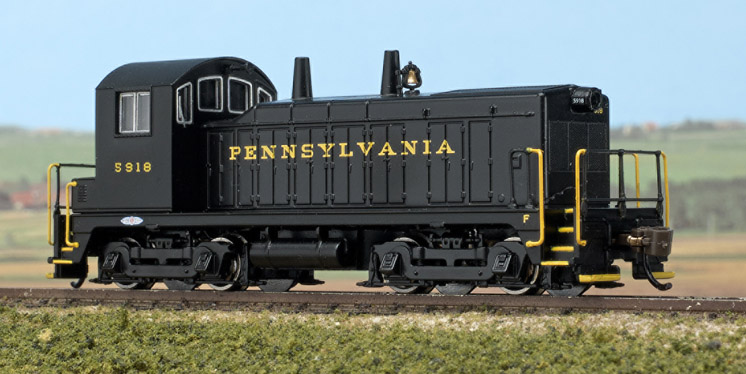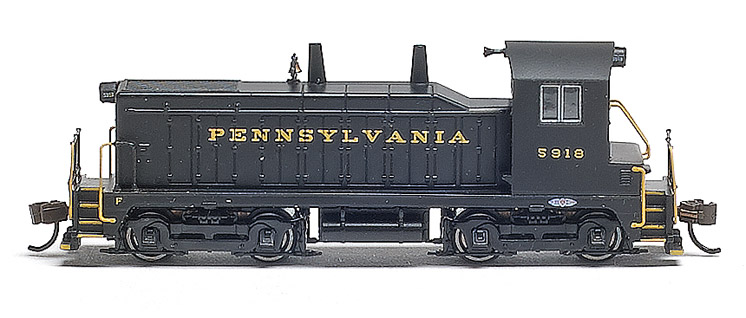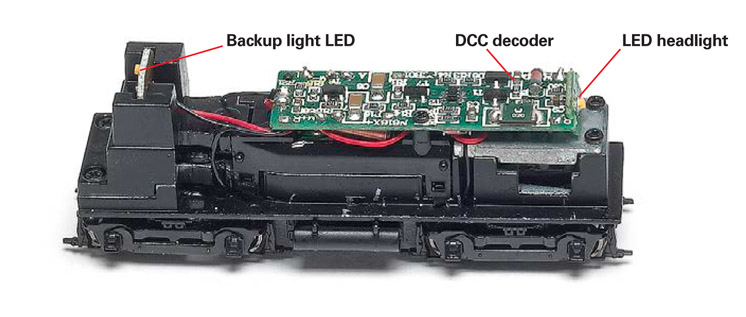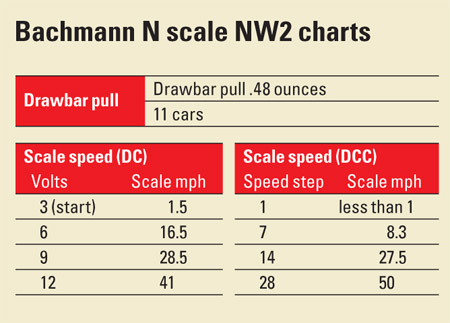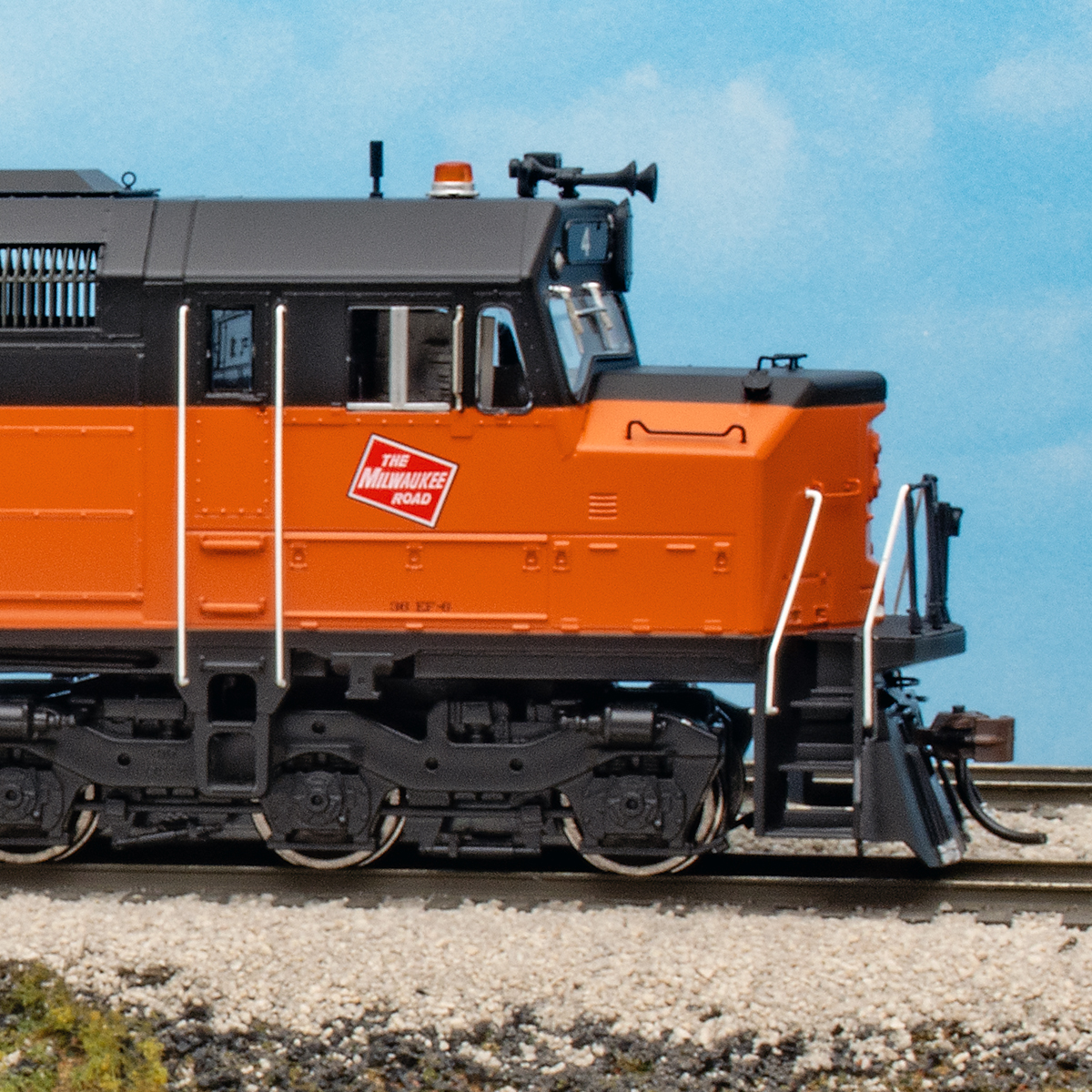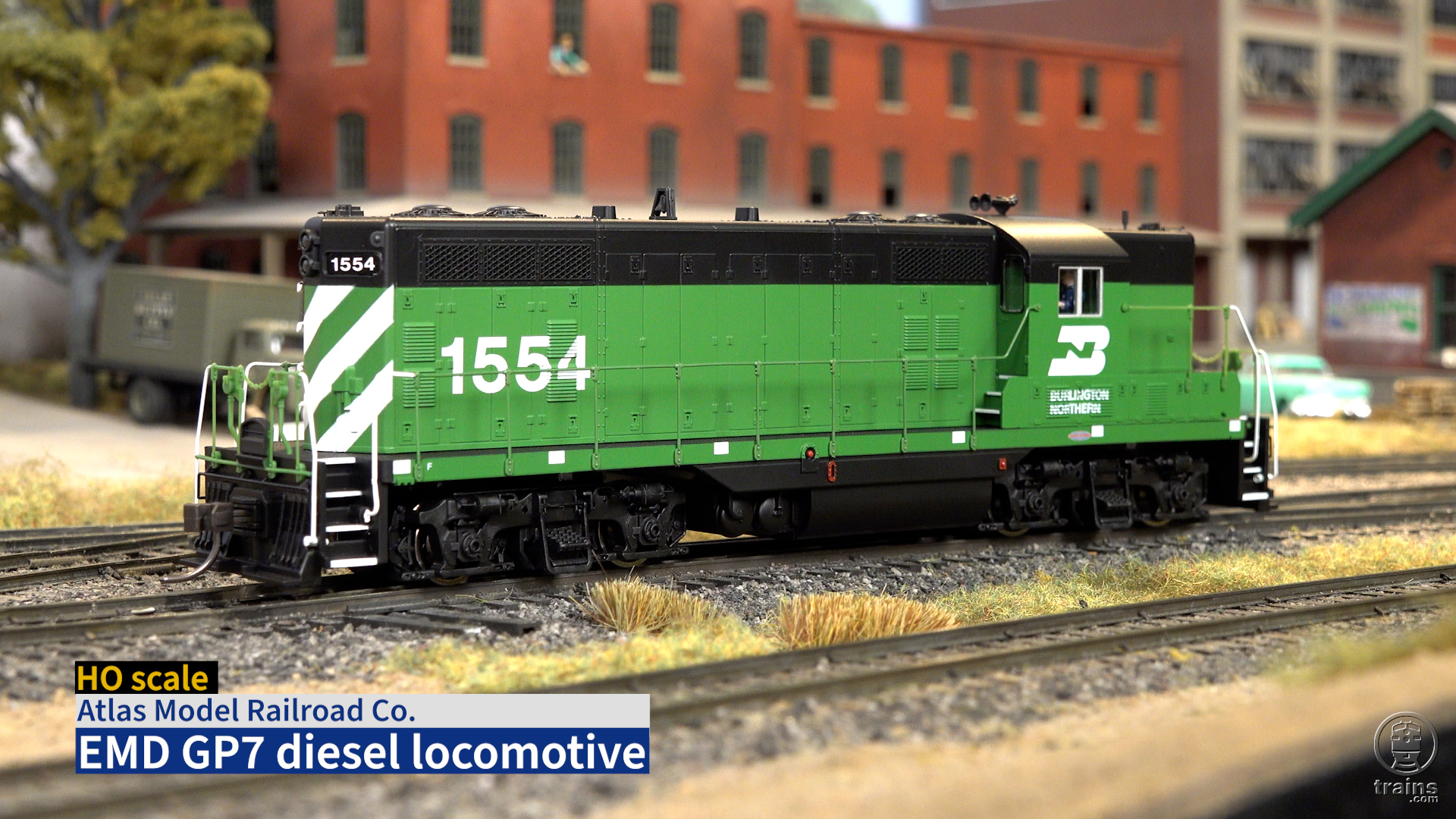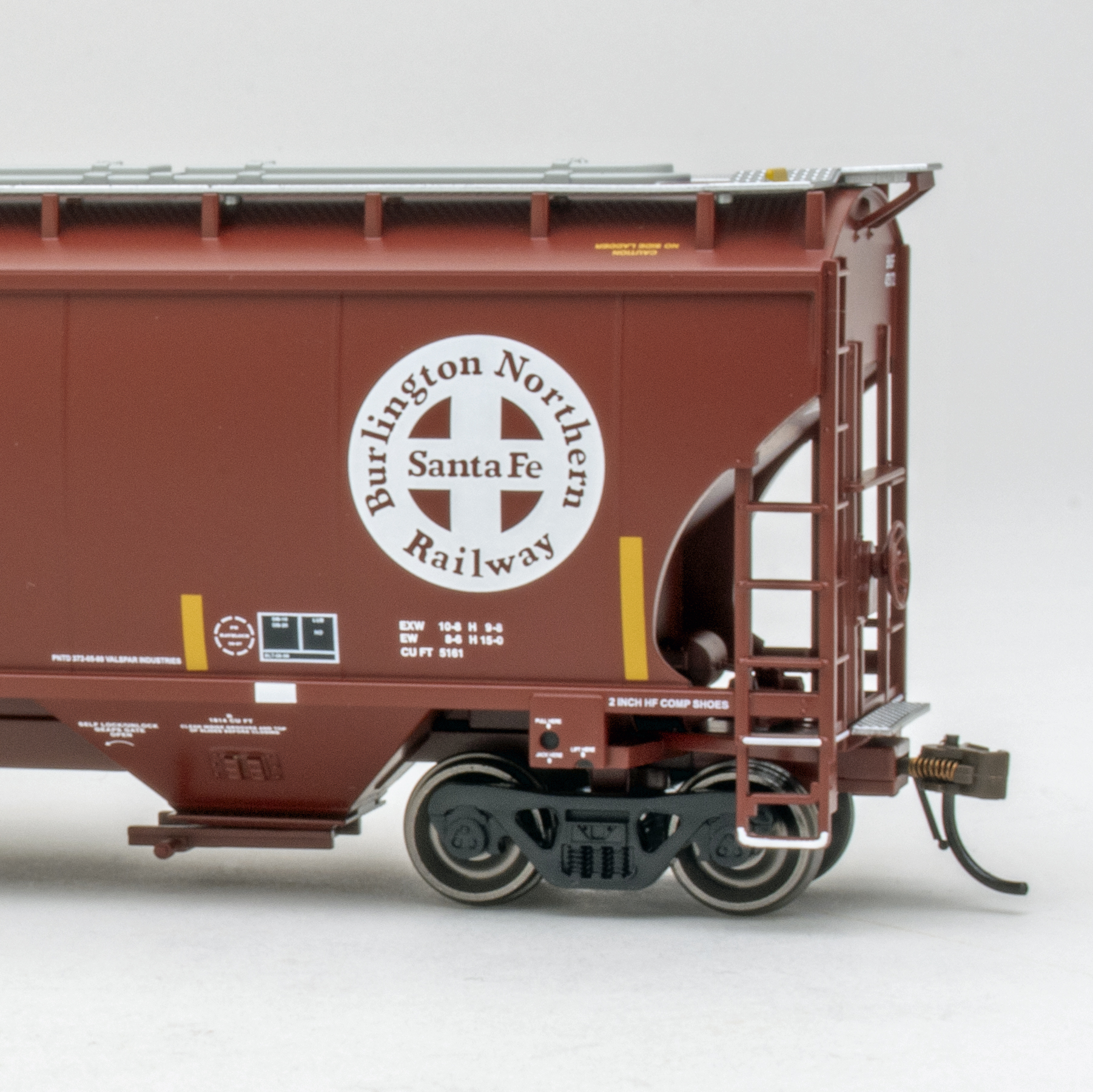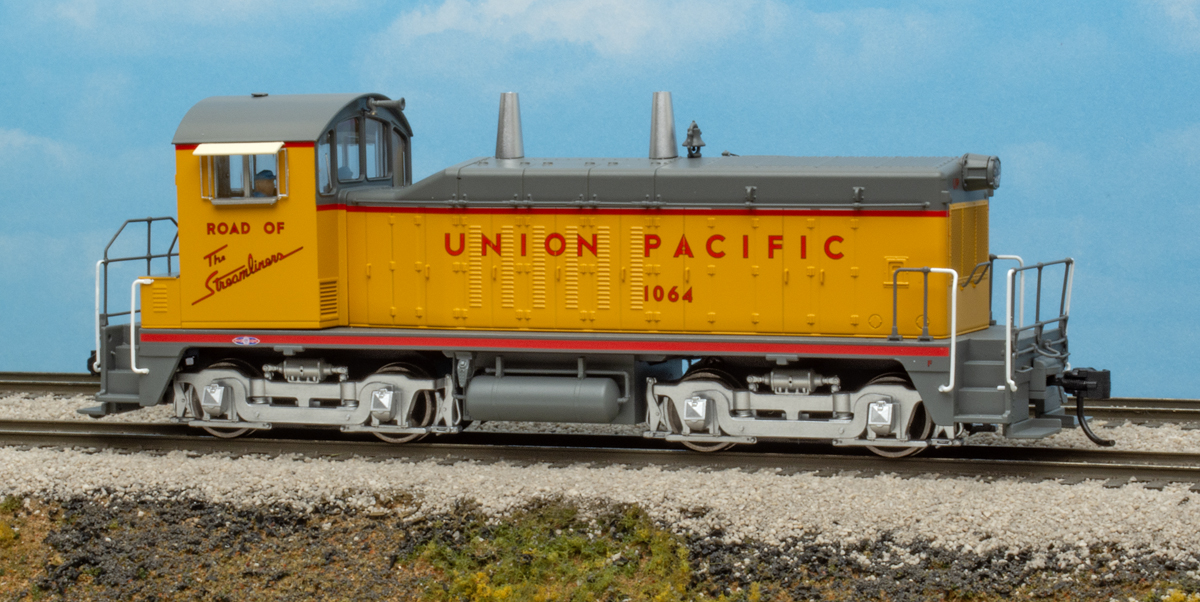The prototype. Railroads across the country rostered NW2s, from a single unit by about 15 railroads to nearly
100 by the Union Pacific. Most were retired by Class 1 railroads in the early 1980s. Some remain in service today on excursion railroads. The Western Pacific Railroad Museum has one in its Run A Locomotive fleet. It’s the second diesel locomotive purchased by the UP.
The Electro-Motive Division of General Motors built more than 1,100 of these 1,000-hp diesels starting in 1939. The locomotive was the first to use all-GM electric components. Production was suspended during World War II, but resumed after 1945 and continued until the end of 1949.
Spotting features of the NW2 include arched cab windows over the long hood, a two-step taper of the hood before the cab, and a short radiator grill on the front.
Railfans have identified five phases of NW2s, with detail differences including the louvers on the side of the hood, the shape of the deck plate, the height of the exhaust stacks, and the shape of the hood taper. The model’s detailing is consistent with a Phase II locomotive, with its conical stacks and plain sides.
The only missing details are the distinctive grab iron that juts out at the front below the radiator grill in many prototype photos and the ladder grabs that climb the fireman’s side of the hood.
One other small quibble – our sample model was painted and lettered for the Pennsylvania RR, but the road number on the cab belonged to a Baldwin VO1000, not an NW2. The Pennsylvania RR had a habit of skipping around with road numbers in this era, applying open numbers to whatever new locomotive it acquired. Road numbers for the other paint schemes appear to be correct.
Instead of the common, for N scale, copper strips to conduct current from the trucks to a split frame, Bachmann runs wires from wipers mounted on each side of the truck to a DCC printed-circuit board (PCB) mounted on top of the frame.
Surface-mount light-emitting diodes (LEDs) are attached to small circuit boards mounted on the frame to line up with the headlight openings molded into the shell. The headlight style varies with roadname.
As of this writing, no decoder manufacturers are offering a drop-in Digital Command Control decoder for the Bachmann NW2. Because of the locomotive’s design, any decoder replacement project would require soldering. Adding sound would be difficult because of the tight confines inside the locomotive shell, making it hard to find a place for a speaker.
The trucks, like the motor, are a snap-fit into the frame. The wheelsets are blackened metal and are in gauge with low-profile flanges.
Bachmann’s E-Z Mate Mark II couplers are mounted to the body shell with small screws and are at the correct height. Rapido-style couplers are included as an option.
The locomotive started moving smoothly, if a bit noisily, at 3V, rolling at 1.5 scale mph. It reached a top speed of 41 scale mph at 12 volts.
In DCC, the locomotive began creeping along at speed step 1 right out of the box at less than 1 scale mile per hour. At speed step 28, the model topped out at 50 scale mph, below the full-size locomotive’s top speed of 65 mph, but plenty fast enough for a switcher. Also in DCC, both headlights remain on no matter the direction, increasing in brightness to match the direction of travel.
The locomotive weighs 1.6 ounces. Testing revealed a drawbar pull of .48 ounce, the equivalent of 12 cars on straight and level track. On our new N scale project layout, the Bachmann NW2 was able to pull a 12-car train around the level layout and through staging.
It also easily negotiated our project layout’s sidings and branch line, with their no. 6 switches and 12″ radius curves. I further tested the locomotive on some pieces of Atlas Snap-Track, and it had no trouble negotiating a 93⁄4″ radius.
This would be a handy little switcher to have on nearly any N scale layout.
Manufacturer
Bachmann Industries Inc.
1400 E. Erie Ave.
Philadelphia, PA 19124
www.bachmanntrains.com
Road names: Pennsylvania; Great Northern; New York Central; Union Pacific; unlettered, painted yellow and black
Era: 1939 to early 1980s
Features:
- DCC-equipped with Bachmann decoder for speed, direction, and lighting
- Double-shafted coreless motor
- Die-cast metal frame
- Prototype-specific headlight
- E-Z Mate Mark II couplers at correct height
- Blackened metal wheels
- Eight-wheel drive and electrical pickup
- Weight: 1.6 ounces





